Deinosuchus rugosus Ebenezer Emmons, 1858

(Da: it.wikipedia.org)
Phylum: Chordata Haeckel, 1874
Subphylum: Vertebrata Cuvier, 1812
Classe: Reptilia Laurenti, 1768
Ordine: Crocodilia Owen, 1842
Famiglia: Crocodylidae Cuvier, 1807
Genere: Deinosuchus Holland, 1909
Descrizione
La conoscenza del Deinosuchus rimane incompleta, ma più completi resti del cranio ritrovati negli ultimi anni hanno ampliato notevolmente la comprensione scientifica di questo antico predatore. Anche se
Diffusione
Parente estinto del coccodrillo che visse tra gli 80 e i 65 milioni di anni fa, durante il tardo periodo Cretaceo. I primi resti fossili sono stati scoperti in North Carolina (Stati Uniti) intorno al 1850, ma il genere non venne classificato e descritto fino al 1909. Ulteriori frammenti furono scoperti nel 1940 e vennero successivamente inseriti in una famosa, anche se imprecisa, ricostruzione del cranio presso l'American Museum of Natural History.
Sinonimi
= Polydectes Cope, 1869 = Phobosuchus Nopcsa, 1924.
Bibliografia
–David R. Schwimmer, The Life and Times of a Giant Crocodylian, in King of the Crocodylians: The Paleobiology of Deinosuchus, Indiana University Press, 2002, pp. 1-16, ISBN 0-253-34087-X.
–Crocodiles Have the Most Powerful Bite Force on Earth, su Roaring Earth, 8 novembre 2016. URL consultato il 6 agosto 2019.
–David R. Schwimmer, How Many Deinosuchus Species Existed?, in King of the Crocodylians: The Paleobiology of Deinosuchus, Indiana University Press, 2002, pp. 107-135, ISBN 0-253-34087-X.
–David R. Schwimmer, The Size of Deinosuchus, in King of the Crocodylians: The Paleobiology of Deinosuchus, Indiana University Press, 2002, pp. 42-63, ISBN 0-253-34087-X.
–David R. Schwimmer, The Prey of Giants, in King of the Crocodylians: The Paleobiology of Deinosuchus, Indiana University Press, 2002, pp. 167-192, ISBN 0-253-34087-X.
–Erickson, G.M., Gignac, P.M., Steppan, S.J., Lappin, A.K., Vliet, K.A., Brueggen, J.D., Inouye, B.D., Kledzik, D., Webb, G.J.W., Insights into the Ecology and Evolutionary Success of Crocodilians Revealed through Bite-Force and Tooth-Pressure Experimentation, in PLOS One, vol. 7, nº 3, 2012.
–Crocodiles Have Strongest Bite Ever Measured, Hands-on Tests Show, su National Geographic News, 15 marzo 2012. URL consultato il 6 agosto 2019.
–Douglas Riff, Mauro Cavalcanti e Jonas P. Souza-Filho, Morphometry, Bite-Force, and Paleobiology of the Late Miocene Caiman Purussaurus brasiliensis, in PLOS ONE, vol. 10, nº 2, 17 febbraio 2015, pp. e0117944.
–The powerful bite of super-croc Purussaurus, su Earth Archives. URL consultato il 6 agosto 2019.
–Kevin Loria, Scientists just figured out how much crushing force a T. rex could deliver with a bite, su Business Insider. URL consultato il 6 agosto 2019.
–George Dvorsky, This Ancient Crocodylian Has Set The Record For The Most Powerful Bite, su io9. URL consultato il 6 agosto 2019.
–Tito Aureliano, Aline M. Ghilardi e Edson Guilherme, Morphometry, Bite-Force, and Paleobiology of the Late Miocene Caiman Purussaurus brasiliensis, in PLoS ONE, vol. 10, nº 2, 17 febbraio 2015.
–Colbert, Edwin H; Bird, Roland T., A gigantic crocodile from the Upper Cretaceous beds of Texas (PDF), in American Museum Novitates, vol. 1688, American Museum of Natural History, 1954, pp. 1-22. URL consultato il 22 febbraio 2009 (archiviato dall'url originale il 4 marzo 2009).
–John Foster, Jurassic West: The Dinosaurs of the Morrison Formation and Their World, Indiana University Press, 2007, p. 150, ISBN 978-0-253-34870-8.
–Cloudsley-Thompson J.L., Ecology and Behaviour of Mesozoic Reptiles, Springer Science, 2005, pp. 40-41, ISBN 3-540-22421-1.
–Rolleston, George; Jackson, William Hatchett, Forms of Animal Life, Oxford at the Clarendon Press, 1870, p. 392.
–Holland, W.J., Deinosuchus hatcheri, a new genus and species of crocodile from the Judith River beds of Montana, in Annals of the Carnegie Museum, vol. 6, 1909, pp. 281-294.
–David R. Schwimmer, The Early Paleontology ofDeinosuchus, in King of the Crocodylians: The Paleobiology of Deinosuchus, Indiana University Press, 2002, pp. 17-41, ISBN 0-253-34087-X.
–Erickson, Gregory M., Brochu, Christopher A., How the 'terror crocodile' grew so big, in Nature, vol. 398, marzo 1999, pp. 205-206.
–Farlow, Femoral dimensions and body size of Alligator mississippiensis: estimating the size of extinct mesoeucrocodylians, in Journal of Vertebrate Paleontology, vol. 25, nº 2, 2005, pp. 354-369.
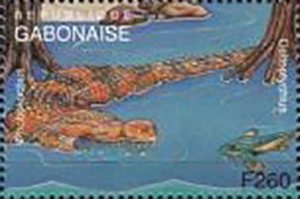
|
Data: 04/09/1995
Emissione: Fauna preistorica Stato: Gabon Nota: Emesso in un foglietto di 12 v. diversi |
|---|
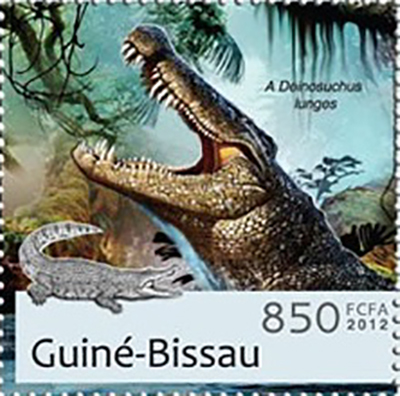
|
Data: 31/10/2012
Emissione: Coccodrilli estinti Stato: Guinea-Bissau |
|---|
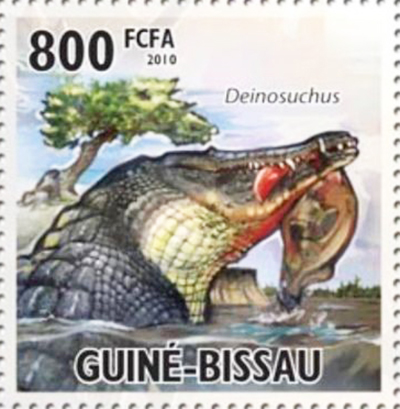
|
Data: 09/11/2010
Emissione: Coccodrilli preistorici Stato: Guinea-Bissau |
|---|
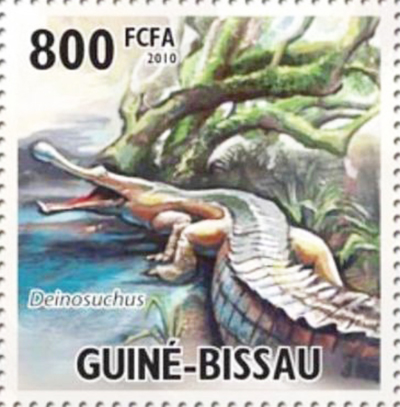
|
Data: 09/11/2010
Emissione: Coccodrilli preistorici Stato: Guinea-Bissau |
|---|
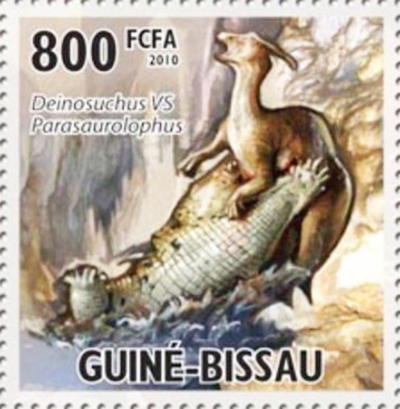
|
Data: 09/11/2010
Emissione: Coccodrilli preistorici Stato: Guinea-Bissau |
|---|
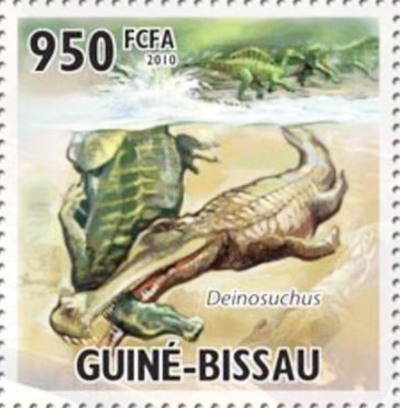
|
Data: 09/11/2010
Emissione: Coccodrilli preistorici Stato: Guinea-Bissau |
|---|
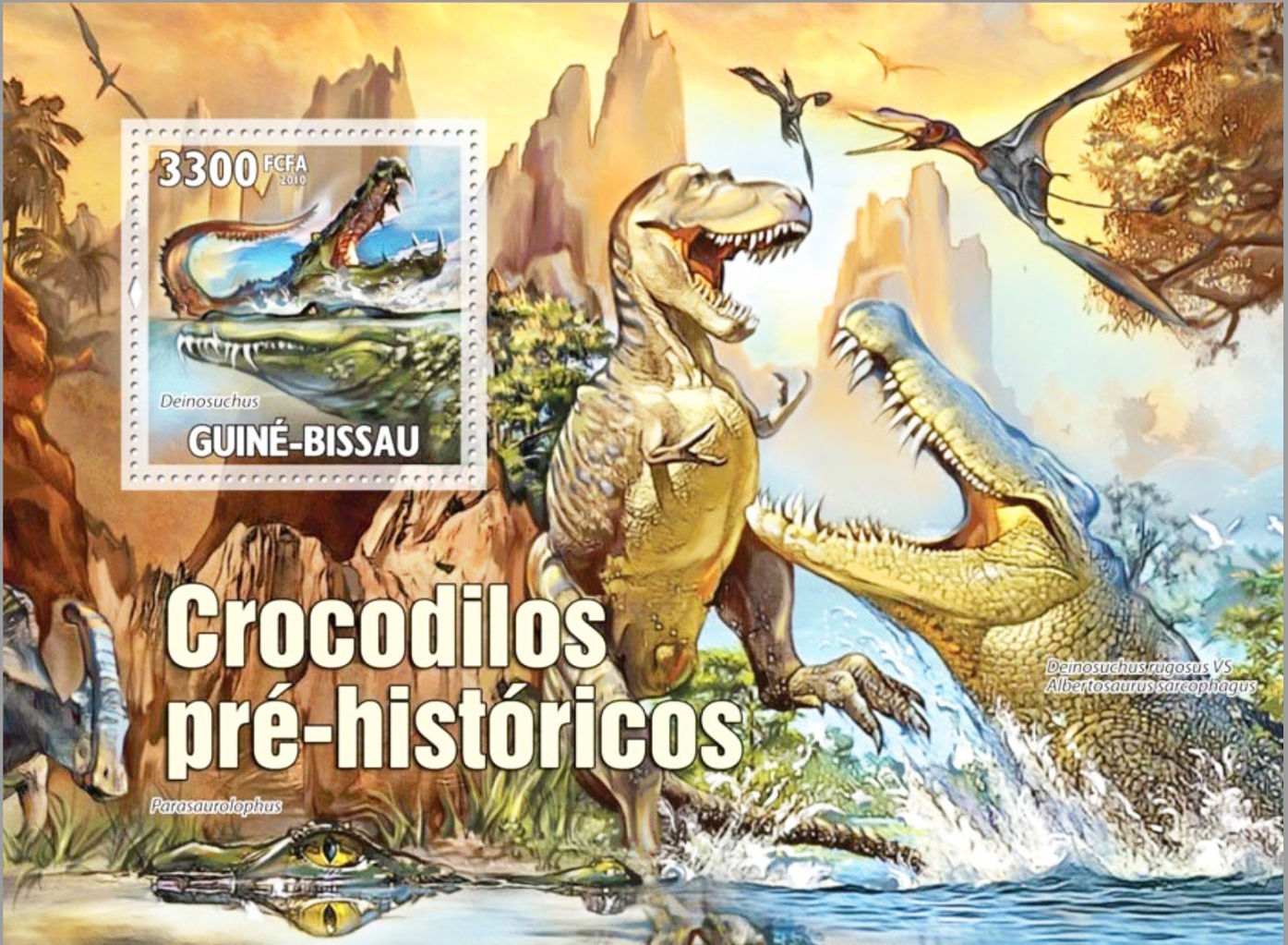
|
Data: 09/11/2010
Emissione: Coccodrilli preistorici Stato: Guinea-Bissau |
|---|
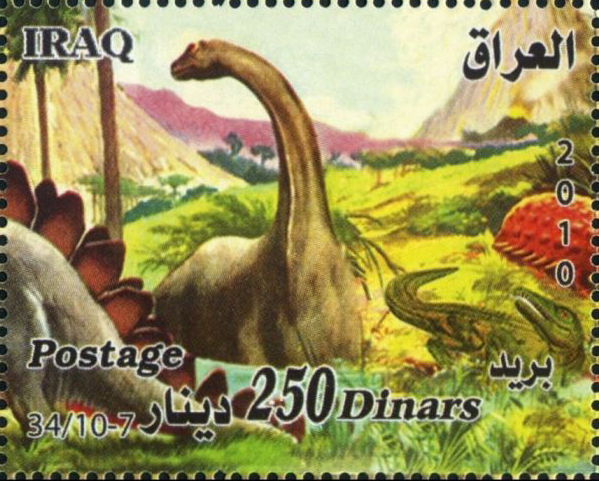
|
Data: 28/06/2010
Emissione: Animali preistorici Stato: Iraq Nota: Emesso in un blocco di 8 v. diversi |
|---|
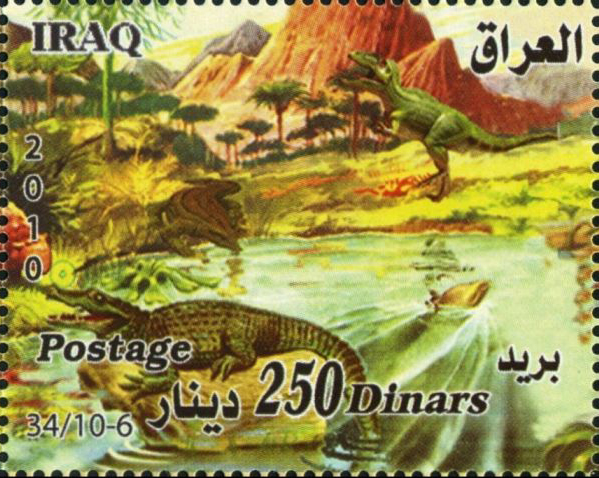
|
Data: 28/06/2010
Emissione: Animali preistorici Stato: Iraq Nota: Emesso in un blocco di 8 v. diversi |
|---|
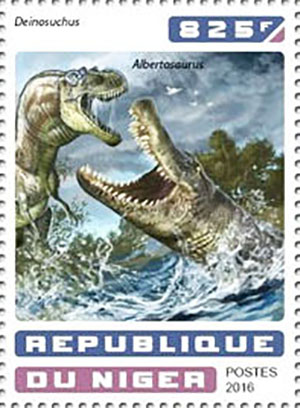
|
Data: 21/12/2016
Emissione: Animali preistorici marini Stato: Niger |
|---|